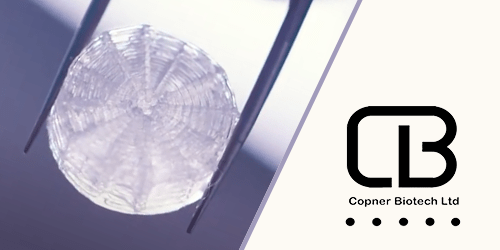Copner Biotech - 3D PETG Cell Culture Scaffolds
3D cell culture scaffolds for physiological conditions
Copner Biotech state-of-the-art design and manufacturing process enables the production of synthetic 3D cell culture scaffolds made of PETG and produced with a 3D printer.
The controlled scaffold structure and composition leads to uniform, confluent and consistent growth of cells and thus better reproducibility. Copner Biotech 3D cell culture scaffolds allow more favourable nutrient and oxygen exchange conditions for cells compared to 2D cell culture and better represent the physiological conditions in the body.
Benefits of 3D cell culture
- Enhancing cell capture and adhesion whilst using low cell seeding concentrations
- Promoting the growth of balanced, confluent cell systems
- Physiologically relevant environment, morphologies and more healthy biomarker
- High batch-to-batch consistency, minimising variables in your 3D cell models
- Cells used to date include, but are not limited to; L929 Fibroblasts, Keratinocytes, HeLa cells, MCF-7 cells, A549 cells and iPSCs
3D vs. 2D cell culture
3D cell culture

3D cell culture creates a physiologically relevant environment:
- Mirrors in vivo tissue, including variable access to oxygen, nutrients and metabolites
- Promotes accurate cell-to-cell and cell-to-extracellular environment interactions
- More relevant gene expression, splicing topology, and biomarkers
⇒ Greater reliability of in vitro results
2D cell culture

2D cell culture provides an un-physiological environment:
Cells adopt an unnatural morphology resulting in a remodeling of the cytoskeleton and a highly altered cell structure
Unlimited access to oxygen, nutrients and metabolites, which is not the case in vivo
⇒ Less reliable in vitro results
Copner Biotech scaffold structure and microstructure
Copner Biotech’s complex-structured 3D scaffolds are synthetic polymers made from PETG and produced using next-generation 3D printing techniques. The 3D printing operating system allows for the creation of specific scaffold regions with optimal surface roughness. These regions give rise to the first successfully attached cells from day 1 seeding and act as the start point for cell proliferation and migration to the periphery.
Cell proliferation from the centre to the periphery is stimulated by discrete oxygen and nutrient gradients across the scaffold interface, formed by the heterogeneity in pore size and distribution. The result is a much more balanced system of cells on the scaffold, with confluency patterns like that of in vivo tissue.
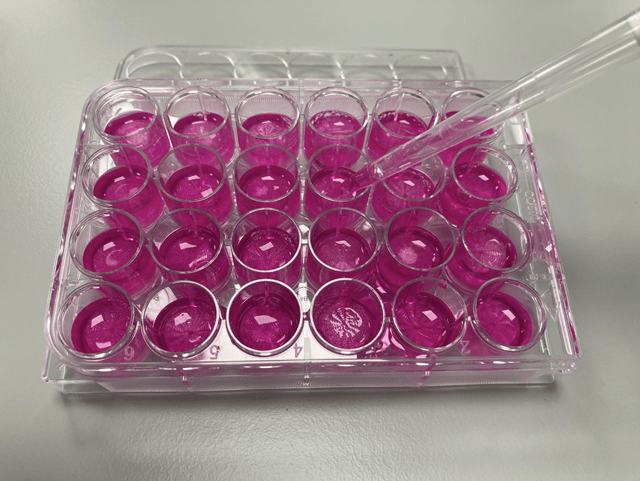
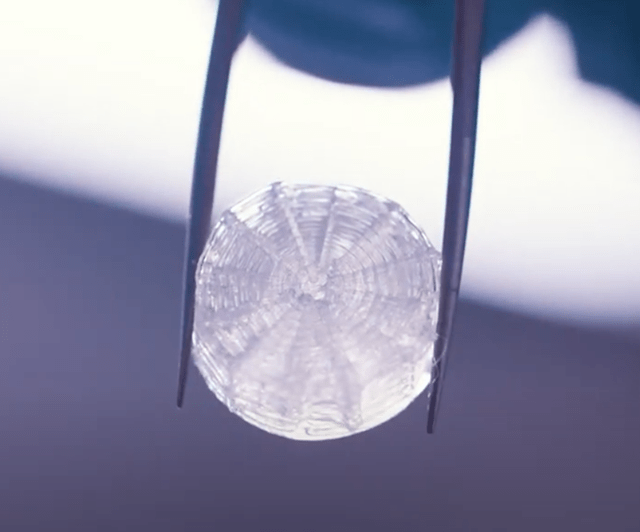
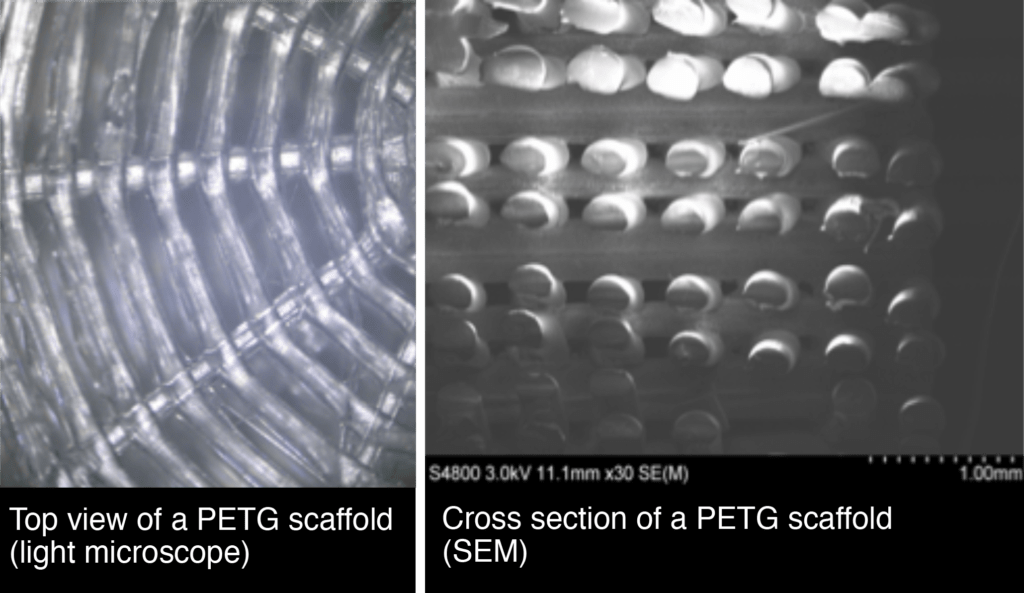
Scaffold microstructure. A discrete oxygen and nutrient gradient across the interface of the 3D PETG scaffold formed by the heterogeneity in pore size, encourages cell proliferation from the centre to the periphery.
Copner Biotech scaffold application examples
Cell growth on 3D PETG scaffold
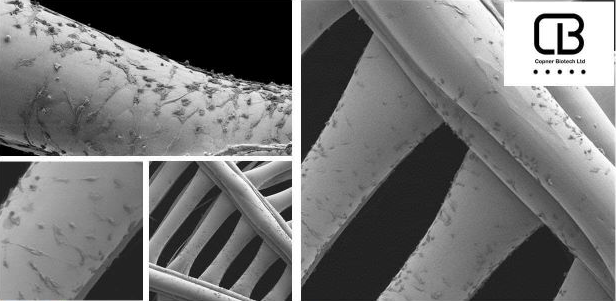
SEM images of L929 cells grown on PETG scaffold at day 7. Cells demonstrate a successful migration from the centre to the periphery of the scaffold, resulting in a balanced, confluent cell system that resembles the patterns of in vivo tissue.
Application for Spheroid & Organoid culture
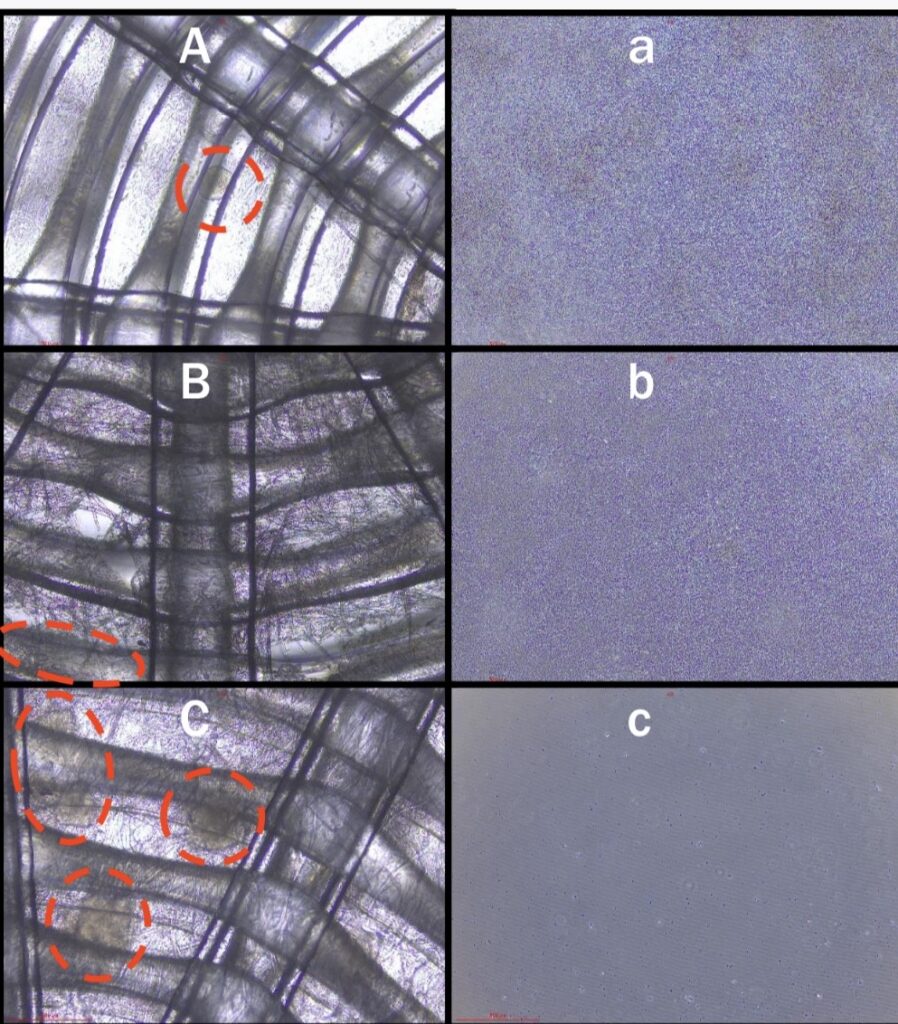
Copner Biotech scaffolds (A, B, C) compared to matrigel coated (a), laminin coated (b) and no coating (c) 2D surfaces. On Copner Biotech scaffolds early embroid bodies form that are all similar in size (red circles). These can be harvested and used for organoid culture.
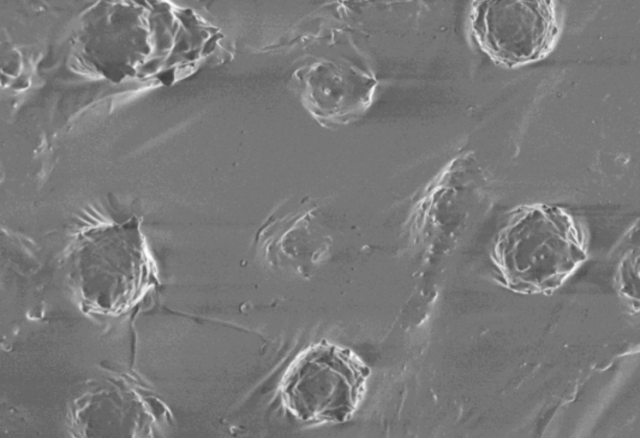
Dermal Spheroids established on uncoated 3D PETG Scaffold. High cell seeding concentrations and culturing over a prolonged period, promote the formation of spheroid cultures that provide a physicochemical environment similar to that in vivo by facilitating cell-cell and cell-matrix interactions.
Copner Biotech 3D PETG Scaffold vs. Corning® Matrigel®
Copner Biotech 3D scaffolds are a worthwhile alternative to Corning® Matrigel®
Production / Material
Growth properties
Supply availability
List Price (June 2023)
Copner Biotech 3D PETG Scaffold
Synthetic polymer made from PETG and produced with a 3D printer.
Controlled scaffold structure and composition leads to uniform, confluent and consistent growth of cells and thus better reproducibility.
Always in stock.
92 CHF / 12 scaffolds
7.65 CHF per well
Savings of ~30%
Corning® Matrigel®
Basement membrane preparation from EHS mouse tumors requiring maintenance of colonies of cancerous mice.
Random matrix, which can reduce the reproducibility.
Encounters major delivery issues.
540 CHF / 10ml (Merck)
10.80 CHF per well (0.2ml)

